Fatima Salek1*, Abdelali Halimi2, Fatima Zaoui3
1University Mohamed V Faculty of Dental Medicine of Rabat – Mohamed V University, Allal El Fassi Avenue, Mohamed Jazouli Street, Madinat Al Irfane 6212, Rabat-Instituts, Morocco
2Angle Bd.Abdelmoumen Et Anwal, Mawlid Iv 3eme Etage Anfa Anfa Casablanca Maroc, Morocco
Correspondence author: Fatima Salek, Specialist in Dentofacial Orthopedics, University Mohamed V Faculty of Dental Medicine of Rabat – Mohamed V University, Allal El Fassi Avenue, Mohamed Jazouli Street, Madinat Al Irfane 6212, Rabat-Instituts, Morocco; E-mail: s_lamya18@hotmail.fr
Published Date: 19-12-2023
Copyright© 2023 by Salek, F, et al. All rights reserved. This is an open access article distributed under the terms of the Creative Commons Attribution License, which permits unrestricted use, distribution, and reproduction in any medium, provided the original author and source are credited.
Abstract
Orthodontic anchorage is the ability of a tooth or multiple teeth to resist unwanted reactional tooth movements, which could be provided by various means. The use of anchoring screws, or more precisely anchoring mini-screws, has made an enormous contribution to the orthodontist by opening up a new era in the management of severe dento-facial deformities that are uncompromising to conventional treatment and especially the situations of loss of anchorage that we will try to develop through this presentation by illustrating our subject by a treated clinical case.
Keywords: Orthodontic Anchorage; Reaction Movement; Mini-Screws
Introduction
The ultimate goal of orthodontic treatment is to achieve the desired tooth movement and reduce undesirable side effects while improving the patient’s esthetics and restoring function. Anchorage is defined as the resistance to unwanted tooth movement that constitutes the reaction part of Newton’s 3rd law statement: “any action causes an equal and opposite reaction”. This most undesirable parasitic reaction must be controlled by an effective anchoring system [1]. Conventional anchoring devices (extra-oral forces and j-hooks), although very effective, are not without inconvenience for the patient and the practitioner. This is why alternatives to conventional anchor were developed in orthodontics, such as miniscrews and miniplates to remedy critical situations anchorage. Very practical, easy to put on and drop off. Their osteo-integration is not necessary; it is mainly a mechanical retention, which allows immediate loading as well as ease of removal [1].
Clinical Observation
This is an AZ patient. W in good general health, 28 years old, having consulted at the center of consultation and treatment of RABAT for an aesthetic and functional chief complaint.
- Clinically; we note from face to rest and smile (Fig. 1)
- A long face (increase of the lower facial stage)
- A labial inocclusion (labial incompetence at rest)
- Forced labial closure with contraction of mentalis muscle
- A slight deviation of the chin towards the right side
- A disharmonious shy smile showing diastems
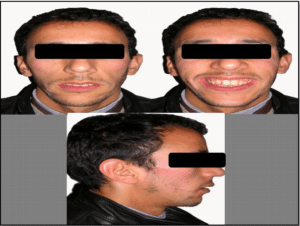
Figure 1: Pre-treatment photographs (Face, profile and smile).
- In profile, we note (Fig. 1):
- A convex, cis-frontal profile
- A closed nasolabial angle
- An open mandibular angle (hyperdivergence)
- A labial biprotrusion (biprochéilie)
- An accentuated labiomentonier groove (marked)
- A short cervico-chin distance
- A contraction of the mentalis muscle
- The endo-oral examination (Fig. 2) showed:
- Inadequate oral hygiene
- A large maxillary and mandibular arch
- Absence of 16, 17, 26, 27 and 28
- An amalgam restoration on the 36 and 37
- Anterolateral open-bite
- Deviation of the two medians relative to the median sagittal plane
- Transverse discrepancy
- An inclination of the occlusal plane
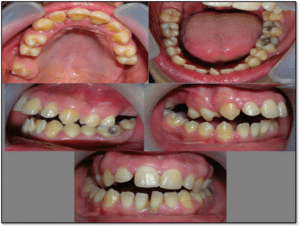
Figure 2: Pre-treatment photographs of occlusion.
- The radiographic examination (Fig. 3) confirms:
- The hyperdivergence
- The biproalvéolie
- The absence of 16, 17, 26, 27 and 28
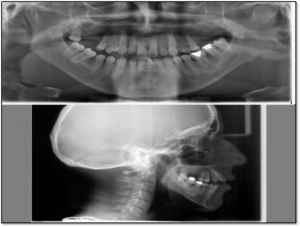
Figure 3: Initial cephalometric (panoramic radiograph and profile radiograph).
- The treatment plan was established as follows:
- Address the patient for periodontal treatment
- Re-education of the tongue
- Alignment and leveling
- Installation of two maxillary miniscrews in both right and left side and radiographic control by two retro-alveolar radiographs (Fig. 4)
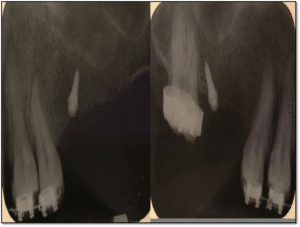
Figure 4: Radiographic control of the miniscrews.
- The decline of the 13, 14 and 15 using the miniscrew (direct anchoring)
- The correction of the occlusal plane inclination by the intrusion of the 24 and 25 using the miniscrew
- Correction of anterolateral open bite and deviation of the upper median by asymmetric incisor retraction (use of miniscrew as indirect anchorage) (Fig. 5)
- Intercuspidation and finishing
- Prosthetic replacement of missing teeth
- Contention
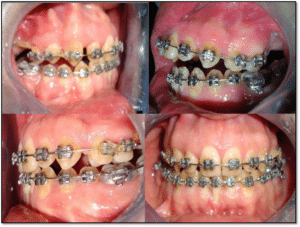
Figure 5: Treatment progress.
Discussion
Orthodontic anchorage control is one of the keys to successful orthodontic treatment. Many anchoring devices have been proposed and used for more than a century. Extra-oral anchors such as directional forces or face masks are the most powerful tools, but their effectiveness depends mainly on the patient’s cooperation. Intermaxillary elastics also have the same disadvantage. Intraoral anchors, such as transpalatal arch, lingual arch, etc., do not require patient cooperation, but it is impossible to provide absolute anchorage [4].
Consequently, the development of skeletal anchoring devices in orthodontics has been important in recent years and has made an enormous service to the orthodontist by opening a new era in the management of these severe dentofacial deformities. rebels to conventional treatment and especially situations of loss of anchorage (critical anchoring situations). Mini-screws, small in size, diameter (approx. 1 to 2.3 mm) and variable length (5 mm to 15 mm) are easy to install and remove at the end of treatment. With primary stability, the orthodontist can anchor on it quickly after placement [5]. Skeletal anchorage can be classified into 2 types [1,2].
- Direct anchoring: which uses exclusively implants to obtain the desired movements without soliciting teeth
- Indirect anchoring: which uses implants to reinforce pre-existing dental anchoring
Some movements of the posterior sector are difficult or impossible to implement using conventional devices. The ideal would be to have an absolute fixed anchorage, external to the teeth. It would make all kinds of orthodontic movement and facilitate particularly the intrusion of the posterior teeth [6].
The axis of insertion of miniscrews is countered; some practitioners have shown that all miniscrews must be inserted perpendicular to the cortical bone, while others believe that a more oblique insertion is preferable, as it slightly increases contact with the bone cortical [7-9]. This contact – defined as primary stability – is primarily responsible for the stability of the miniscrew, as they are not designed to be osseointegrated. Indeed, whatever the angle of insertion, the surrounding bone must be healthy to resist the force generated by miniscrews.
According to the investigation conducted by Shirck, et al., the most common use of miniscrews is incisivo-canine retraction in cases where premolars have been extracted, or cases with multiple dental absences where the concerns anchoring are important [10].
Conclusion
Mini-screws are a real revolution in the management of orthodontic anchorage that provide absolute anchorage and require less patient cooperation. Indeed, these devices are a therapeutic option in cases of critical anchoring that would have resulted in loss of anchorage if treated with conventional anchoring means. This concept is not invasive and simple to implement, but must follow a thoughtful and individualized biomechanical strategy.
Conflict of Interest
The authors have no conflict of interest to declare.
References
- Alehyane N. Focusing on the mini-screw and orthodontic anchorage. Rev Odont Stomat 2011;40:204-21.
- Mizrah EI. The use of miniscrews in orthodontics: A review of selected clinical applications. Prim Dent J. 2016;5:20-7.
- Ricky E. Clinical uses for temporary anchorage devices. Decisions in Dentistry. 2017;3(6):15-21.
- Kuroda S. Risks and complications of miniscrew anchorage in clinical orthodontics. Japanese Dental Science Review. 2014;50(4);79-85.
- Serra G, Morais LS, Elias CN, Meyers MA, Andrade L, Muller C, et al. Sequential bone healing of immediately loaded mini-implants: histomorphometric and fluorescence analysis. Am J Orthod Dentofacial Orthop. 2010;137(1):80-90.
- Davarpanah M, Caraman M, Khoury PM, Augeraud E, Agachi A, Szmukler-moncler S. The application of squeletal anchorage in orthodontics. Actualités Odonto Stomatologiques n° 237. 2007.
- Petrey JS, Saunders MM, Kluemper GT, Cunningham LL, Beeman CS. Temporary anchorage device insertion variables: effects on retention. Angle Orthod. 2010;80:634-41.
- Noble J, Karaiskos NE, Hassard TH, Hechter FJ, Wiltshire WA. Stress on bone from placement and removal of orthodontic miniscrews at different angulations. J Clin Orthod. 2009;43:332-4.
- Deguchi T, Nasu M, Murakami K, Yabuuchi T, Kamioka H, Takano-Yamamoto T. Quantitative evaluation of cortical bone thickness with computed tomographic scanning for orthodontic implants. Am J Orthod Dentofacial Orthop. 2006;129:e7-e12.
- Schirk JM, Firestone AR, Beck FM, Vig KW, Huja SS. Temporary anchorage device utilization: Comparison of usage in orthodontic programs and private practice. Orthodontics (Chic.). 2011;12:222-31.
Article Type
Case Report
Publication History
Received Date: 25-11-2023
Accepted Date: 12-12-2023
Published Date: 19-12-2023
Copyright© 2023 by Salek, F, et al. All rights reserved. This is an open access article distributed under the terms of the Creative Commons Attribution License, which permits unrestricted use, distribution, and reproduction in any medium, provided the original author and source are credited.
Citation: Salek, F, et al. Enhancement of Orthodontic Anchoring by the Use of Bone Anchorage: A Case Report. J Dental Health Oral Res. 2023;4(3):1-6.

Figure 1: Pre-treatment photographs (Face, profile and smile).

Figure 2: Pre-treatment photographs of occlusion.

Figure 3: Initial cephalometric (panoramic radiograph and profile radiograph).

Figure 4: Radiographic control of the miniscrews.

Figure 5: Treatment progress.


